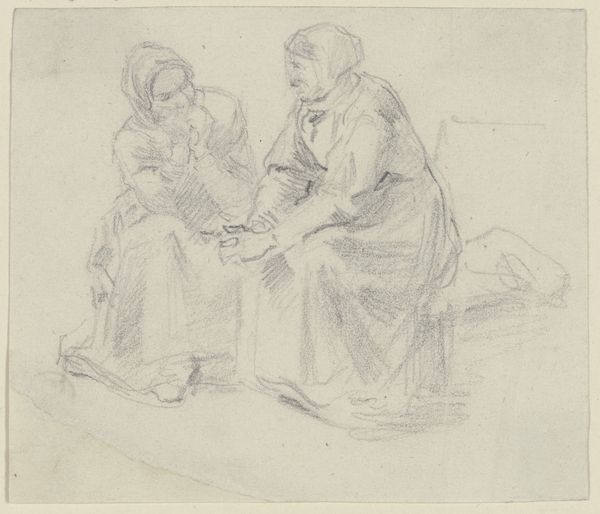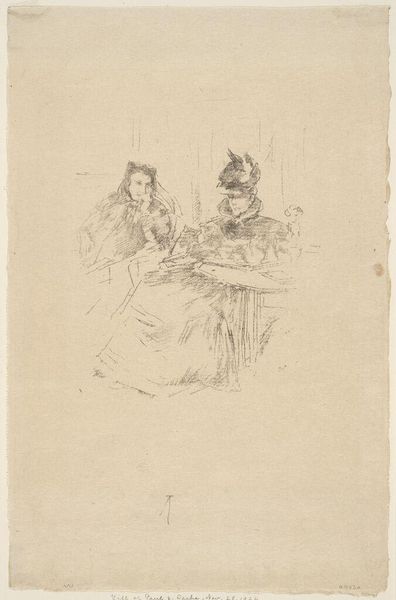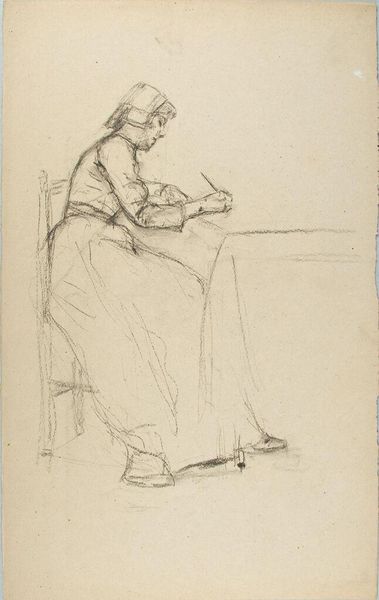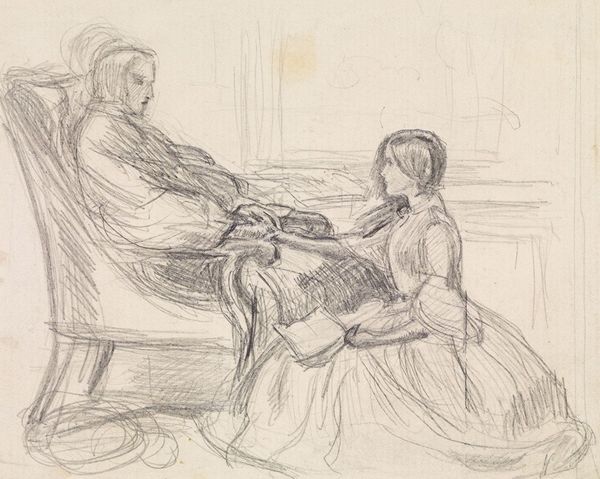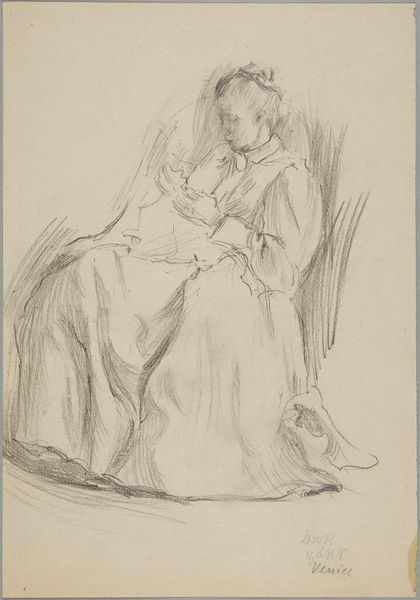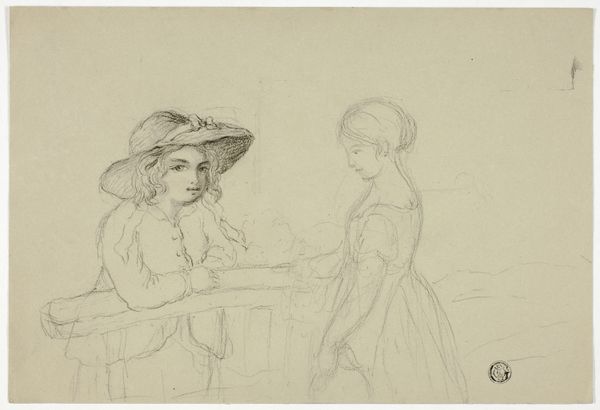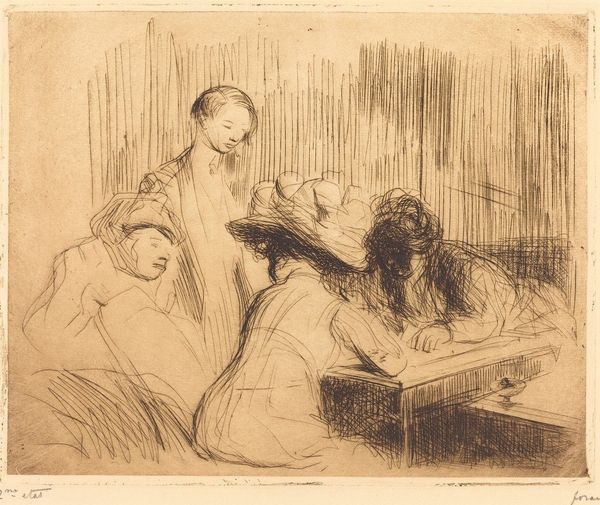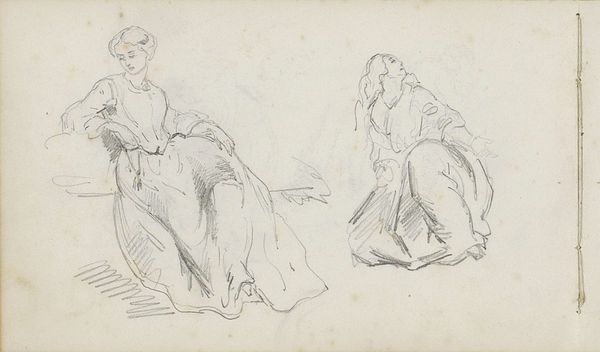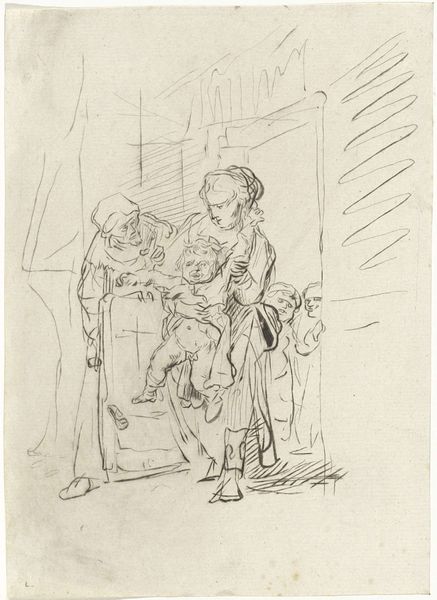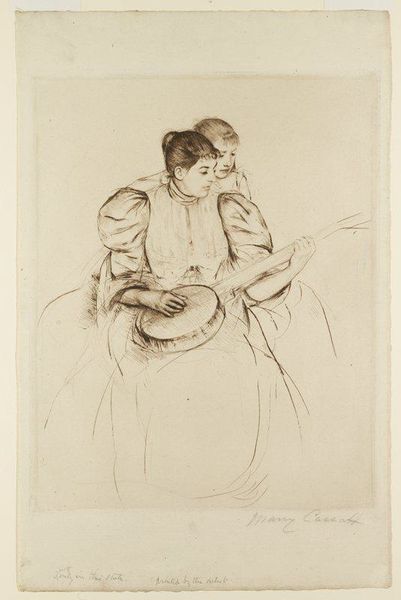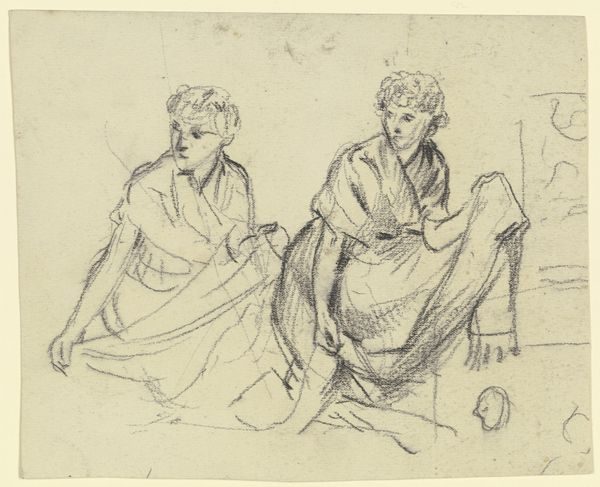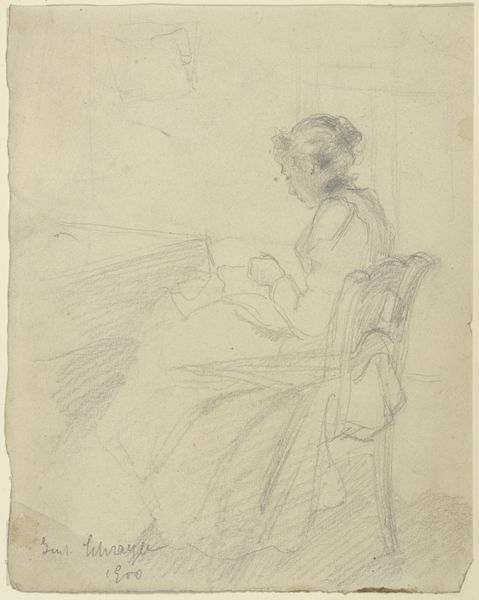
drawing, pencil
#
portrait
#
drawing
#
pencil
#
genre-painting
#
academic-art
#
realism
Copyright: Public Domain: Artvee
Curator: This drawing from 1858 is titled "Couple seated at a table," created by James Abbott McNeill Whistler using pencil. What is your initial impression of this seemingly simple piece? Editor: Stark simplicity! There's a poignant loneliness about these figures, rendered with such spare lines. The starkness is intensified by the subjects' enclosed space and inward focus. It speaks to constrained roles, like captured moments in an attic novel. Curator: I agree about the implied narrative tension, and it’s noteworthy that Whistler utilizes an academic-art approach to capture their essence. Consider the composition: the table acts as a strong horizontal plane, dividing the pictorial space, while the figures occupy distinct zones within it. The balance he strikes through this division is compelling. Editor: And the hat—what symbols! This seemingly oversized and sketchily-rendered hat dominates one side. Hats throughout history represent social identity, even status, here, a symbol that alludes to self-consciousness or societal conformity. One wonders what this conceals, culturally or even emotionally. Curator: Excellent observation, although Whistler leaves enough unsaid through suggestive strokes to maintain openness. Look at how he uses hatching and cross-hatching to suggest volume and depth, yet leaving certain areas deliberately vague and open to interpretation. This economy of line emphasizes the flatness of the picture plane. Editor: The woman’s bonnet, versus the other's bold hat, also whispers about power dynamics between genders in Victorian society. But their seated stillness emphasizes restraint. One wonders, are they waiting for someone? Discussing secret affairs? Their shared space amplifies those mysteries, as symbols. Curator: A very insightful consideration of Victorian symbolic vocabulary, though as a Formalist, I am hesitant to assign too literal an interpretation. Focus more directly on the quality of lines, their interaction, to reveal tension and structure. Ultimately, the sketch shows the artist’s understanding of perspective. Editor: Ultimately, perhaps both our interpretations offer another look. As you focus upon balance, I contemplate the weight of unacknowledged social expectations – each approach helps to enrich engagement within the art itself.
Comments
No comments
Be the first to comment and join the conversation on the ultimate creative platform.
